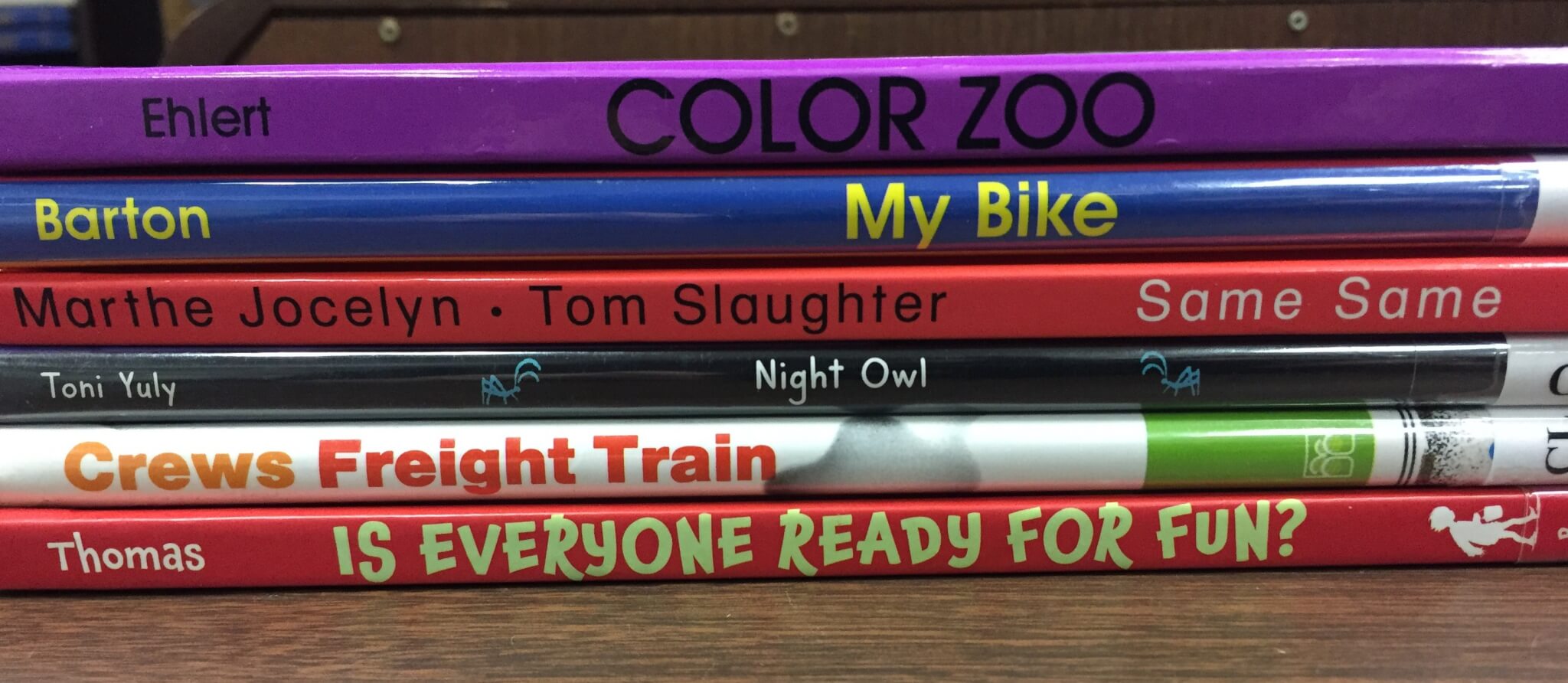Children with low vision are a diverse group of readers. Some benefit from large print; others from high contrast. When it comes to picture books, where the meanings of stories usually depend on illustrations, how can we help children with low vision? High-contrast, visually simple picture books are a good place to start.
My Bike by Byron Barton
For children with Cortical Visual Impairment (CVI), red and yellow are often two preferred colors. In My Bike, Tom and his bicycle appear in bright reds, yellows, and greens. The illustrations become more visually complex after the first few pages. To reduce visual complexity, use black construction paper with a square cut out. As you read, position the paper to reveal only the most important details on each page.
Same Same by Marthe Jocelyn and Tom Slaughter
Familiar objects rendered in “paint-box bright” colors introduce the concept of classification.
Night Owl by Toni Yuly
An orange owl outlined with thick black lines searches for Mommy Owl amidst dark shades of purple representing nighttime.
Color Zoo by Lois Ehlert
Pages with cutouts reveal abstract zoo animals made entirely of bright shapes. Visually, the zoo animals may be too complex for most children with low vision. With each page turn, reveal a single shape in contrasting colors on the reverse side of the page.

Is Everyone Ready for Fun? by Jan Thomas
Three cows hop on chicken’s sofa, facial features outlined with wide bold lines. Each two-page spread features smooth, solid backgrounds in bright greens and blues.
Freight Train by Donald Crews
Beginning and ending with an empty track against a white background, train cars appear one by one in bright colors.
Fish Eyes: A Book You Can Count On by Lois Ehlert
Tropically-colored fish swim against a dark blue background in this counting book.

What high-contrast picture books would you add to this list? Let us know in the comments below!

